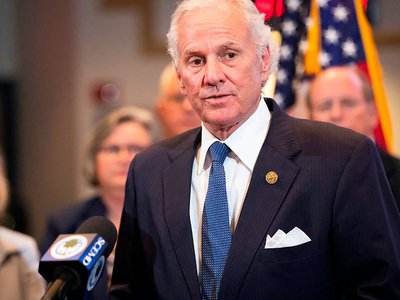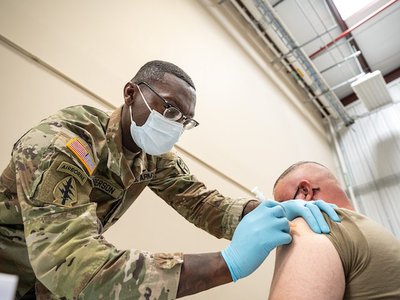Stars and Stripes reports:
A ceremony that was to reunite American and Japanese veterans of the Battle of Iwo Jima on the 75th anniversary of the bloody World War II campaign has been canceled due to concerns over the new coronavirus.
Survivors have made the sojourn to the infamous tear-shaped volcanic island since 1985 for the Reunion of Honor ceremony. The event — held at an obelisk overlooking the invasion beach of what is now referred to as Iwo To — also draws a host of military and government VIPs as well as members of the III Marine Expeditionary Force on Okinawa.
...
It is unclear whether the ceremony will be rescheduled. Japanese officials referred Stars and Stripes to its Ministry of Foreign Affairs for comment, but it did not respond to inquiries on Monday.
The novel coronavirus, COVID-19, appeared first in the Chinese city of Wuhan in December and has since spread globally, leading to widespread cancellations of gatherings and events across Asia. The World Health Organization has declared it a global health emergency.
...
The Battle of Iwo Jima began with an amphibious assault by Marines on Feb. 19, 1945, following months of aerial and naval bombardment by the Navy and Army Air Force. The Japanese had dug deep into the volcanic rock of the island and linked their fighting positions by a labyrinth of tunnels.
Seventy-thousand Marines took part in the 36-day battle, suffering more casualties than the Japanese with more than 6,800 killed and 19,000 wounded. On the Japanese side, approximately 18,000 were killed. Only 216 Japanese were captured alive.
Two flag raisings atop the 554-foot Mount Suribachi provided the Americans with a boost when all seemed lost. The second, which was captured by The Associated Press’ Joe Rosenthal in a now iconic photograph, became a symbol of sacrifice and helped rally the people back home to support the war effort.
Here's what 95-year-old Leighton Willhite remembers about that battle:
Leighton Willhite thought it was all over but the shouting when he watched the first flag raised over Mount Suribachi.
Four days of hell behind them, Willhite and his fellow Marines on Iwo Jima thought it wouldn’t be much longer before the remaining Japanese force was whipped on Feb. 23, 1945.
“We thought it was over. When you raise a flag over something, it’s yours,” the now 95-year-old Willhite said in his Rockville home.
“And then we raise the second, bigger flag and everybody went wild. It’s over. It’s through, we thought. But it didn’t work out that way after all.”
In the month following the flag raising, the battle for Iwo Jima would become the bloodiest battle in Marine Corps history, with more than 7,000 Marines killed in action and another 22,000 injured.
And while perhaps the most enduring moment of the battle for Iwo Jima — and maybe of the whole of World War II — came just four days after it began, Willhite can’t help but remember all 36 days he spent on the island.
...
“We were told the island was defended by 2,000 old men and young boys and that we wouldn’t be there two days,” Willhite remembers being told of Iwo Jima.
With that being all he knew about the place, Willhite said he wasn’t too concerned as he headed for the beach on Feb. 13, 1945.
“I don’t remember exactly what I was thinking, but it would have been wrong,” Willhite said. “They told us it wouldn’t take long and we didn’t have any reason not to believe them.”
Willhite said 5th Tanks was tasked with helping the 28th Marine Regiment establish a beachhead and then push to staging areas at the base of Mount Suribachi. From there, the infantry elements of the 28th could start assaulting the mountain’s fortified defenses.
But almost as soon as the landing ship reached the beach and the tracks of the tank began digging into the island’s now-famous black volcanic sand, whatever notion he had of the operation ahead gave way to a gruesome reality.







